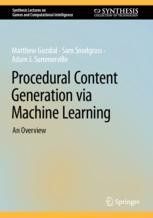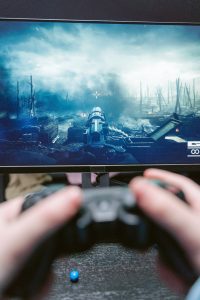
Machine Learning (ML) has revolutionized numerous industries, and its impact on the gaming industry is no exception. One fascinating application of ML in gaming is procedural content generation (PCG). PCG refers to the generation of game content, such as levels, environments, characters, and items, using algorithms and ML techniques. In this article, we will explore the role of machine learning in procedural content generation and its implications for the gaming world.
What is Procedural Content Generation?
Procedural content generation is a technique used in game development to create dynamic and limitless game content. Traditionally, game developers had to manually design and create each element of the game, which often proved time-consuming and limited the overall scale and variability of the gaming experience. However, with the advent of PCG, developers can rely on algorithms and ML models to generate an infinite combination of game content, making each playthrough unique.
The Advantages of Machine Learning in Procedural Content Generation
The integration of machine learning algorithms into procedural content generation has brought several notable advantages to the gaming industry:
1. Infinite Variation
ML-based PCG algorithms can create an enormous amount of diverse and unique game content. By analyzing existing game data and patterns, ML models can learn to generate new levels, characters, or even entire game worlds with unprecedented variation. This endless variety keeps players engaged and excited as they explore new challenges and experiences.
2. Real-Time Adaptation
Incorporating ML into PCG enables games to adapt their content in real-time based on each player’s behavior and preferences. ML models can analyze player interactions and adjust the game elements accordingly to create a personalized gaming experience. This adaptability ensures that players are consistently challenged while providing a tailor-made environment suited to their gaming style.
3. Faster Development
PCG powered by ML algorithms significantly reduces development time and effort. Instead of manually designing every single aspect of a game, developers can rely on ML models to automate content generation. This automation not only expedites the development process but also allows developers to focus on other crucial aspects of game design, such as mechanics and storytelling.
Machine Learning Techniques for Procedural Content Generation
Several machine learning techniques contribute to the success of procedural content generation:
1. Generative Adversarial Networks (GANs)
GANs consist of two neural networks: a generator and a discriminator. The generator learns to produce authentic game content, while the discriminator distinguishes between the generated content and real game assets. This interplay between the generator and discriminator allows GANs to generate highly realistic and visually pleasing game elements.
2. Markov Chains
Markov Chains are a statistical model that analyzes and predicts future states based on current states. In PCG, Markov Chains identify patterns in existing game content to generate coherent and seamless game levels. By understanding the relationships between different game elements, Markov Chains can create levels that offer a balanced and engaging player experience.
3. Neural Networks
Neural networks are widely used in PCG to generate complex game content such as characters and items. By training on existing game data, neural networks can learn and replicate the patterns and characteristics of game assets, resulting in the generation of new and unique content.
Challenges and Future Directions
While machine learning has revolutionized procedural content generation, there are still challenges that need to be addressed to further enhance its capabilities:
Data Availability
Access to high-quality training data is crucial for ML algorithms to generate accurate and diverse content. Collecting and curating large-scale gaming datasets can be cumbersome, especially for smaller game developers. The availability of comprehensive and publicly accessible datasets can accelerate the adoption and refinement of ML-based PCG algorithms.
Player-Centric Content Generation
The effectiveness of PCG algorithms lies in their ability to create content that resonates with players. Future developments should focus on incorporating feedback mechanisms and player preferences into the ML models, enabling more personalized and immersive gaming experiences.
Ethical Considerations
As machine learning algorithms continue to evolve, it is essential to address ethical concerns surrounding content generation. Striking a balance between automation and human creativity is vital to preserve artistic integrity and prevent content monotony.
Conclusion
Machine learning has revolutionized the gaming industry, and procedural content generation is a prime example of its potential. ML-powered PCG algorithms allow for infinite variation, real-time adaptation, and faster development, enhancing the gaming experience for players. With techniques like GANs, Markov Chains, and Neural Networks, game developers can create dynamic and unique game content. Although challenges remain, the future of machine learning in procedural content generation is promising, ushering in a new era of creativity and innovation in the gaming world.


